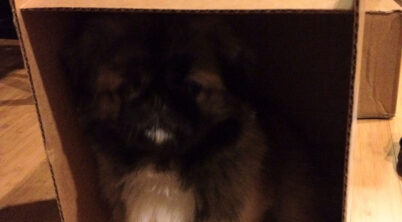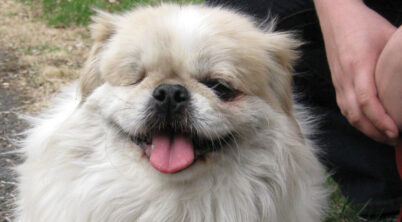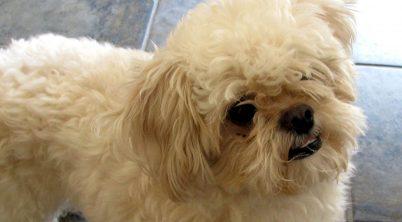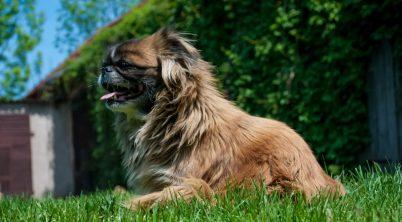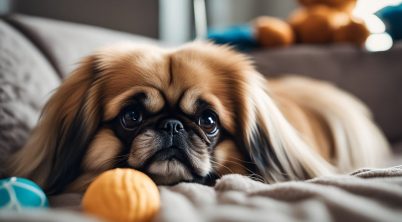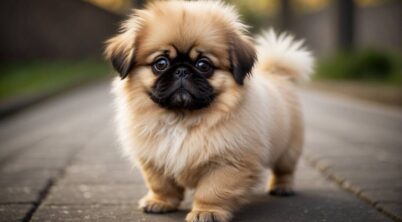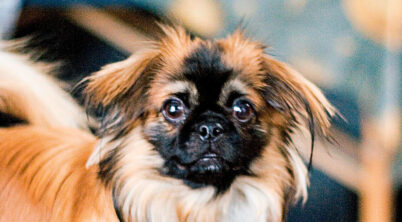The Pekingese breed, with its long, abundant coat and charming demeanor, captures the hearts of many. Originating from ancient China, this toy breed is known for its lion-like mane and regal presence. As individuals seek compatible canine companions, particularly those with allergies, the question of whether Pekingese dogs are hypoallergenic often arises. It is imperative to address this inquiry with factual clarity.
Contrary to what some may hope, Pekingese are not hypoallergenic. They tend to shed a significant amount of fur, and like many other breeds, they produce dander—an allergen which can trigger responses in sensitive individuals. Those with allergies may find that Pekingese, due to their shedding and dander, could exacerbate allergic symptoms. While no dog breed is entirely free of allergens, those labeled as hypoallergenic generally produce fewer allergens and shed less, which makes them more suitable for allergy sufferers.
It is essential for potential owners with allergies to consider the implications of bringing a Pekingese into their home. Although the breed is not hypoallergenic, allergy management is possible. Regular grooming, maintaining a clean living environment, and installing high-efficiency air filters can help reduce airborne dander. Those with mild allergies may find these steps enable them to comfortably share a space with a Pekingese, while individuals with more severe allergies may need to consider alternative breeds better suited to their health needs.
Table of Contents
Pekingese: Are They Hypoallergenic?
When discussing the hypoallergenic qualities of dog breeds, it’s essential to understand what the term “hypoallergenic” implies. It refers to the tendency of certain breeds to be less likely to cause allergic reactions in humans. It should be noted that no dog breed is completely hypoallergenic, but some breeds are generally more suitable for allergy sufferers.
The Pekingese is a small dog known for its long, luxurious coat. Despite their adorable appearance and compact size, which might seem ideal for indoor living and for people with allergies, they are not hypoallergenic.
Allergenic Factors
- Coat: Pekingese have a double coat that sheds.
- Dander: They produce dander, a common allergen.
- Shedding Cycle: They typically shed heavily twice a year.
Managing Allergies
For individuals with dog allergies, it’s crucial to be aware that Pekingese may not be the best fit. They require regular grooming to manage shedding. However, even with frequent grooming, allergens can still be present in the environment.
- Grooming: Regular brushing can help minimize shedding.
- Cleanliness: Keeping the living space clean can reduce allergens.
- Air Filtration: Use HEPA filters to capture airborne dander.
While the Pekingese can be a loving and devoted companion, their physical characteristics necessitate careful consideration by those with allergies. They’re a charming breed with a noble lineage—but their hypoallergenic status is a myth.
Hypoallergenic Potential
When exploring the suitability of Pekingese dogs for allergy sufferers, it’s essential to understand the characteristics that influence their hypoallergenic potential. Key factors include the dog’s production of dander, saliva, and the type of hair they possess.
Understanding Hypoallergenicity
Hypoallergenic dogs are breeds with a lower tendency to provoke allergic reactions in susceptible individuals. Typically, these dogs produce fewer allergens like dander and saliva, which contain proteins that trigger allergies. It’s important to note that no dog breed is completely free of allergens.
- Allergies: A response of the immune system to foreign proteins found in dander, saliva, or hair.
- Dander: Microscopic flakes of skin shed by dogs, a common allergen.
- Saliva: Can contain allergens spread to the dog’s fur during grooming.
- Hair: Type and growth pattern of the dog’s coat affect allergen accumulation and distribution.
Pekingese and Allergens
Pekingese are known for their long, flowing coat, which requires regular grooming to maintain. Concerning allergens:
- Dander: Pekingese have a double coat that sheds and may increase allergen presence.
- Saliva: Their grooming habits can transfer saliva to their hair, spreading allergens.
- Hair: The breed does not have the non-shedding coat typical of hypoallergenic breeds.
Allergic Reactions: Pekingese may not be the best fit for people with severe dog allergies due to their shedding. To mitigate this:
- Hair Care: Regular brushing can help manage shedding and reduce dander spread.
- Cleaning: Frequent vacuuming and use of air purifiers can lower allergen levels in the home.
Although they are charming and loveable, Pekingese dogs may not suit households with allergy sufferers due to their shedding and dander production.
Grooming and Maintenance
Pekingese dogs demand consistent grooming due to their long, luxurious fur. They have a double coat that sheds, particularly during shedding seasons, necessitating a dedicated brushing and maintenance regime.
Coat Care and Brushing
Pekingese possess a double coat, with a thick undercoat and longer outercoat. Regular brushing—at least three times a week—is essential to prevent matting and remove loose fur. During shedding seasons, daily brushing helps manage increased hair loss. A slicker brush or a long-toothed comb is ideal for penetrating the dense fur. Carefully detangle the coat starting from the ends, moving towards the roots to minimize discomfort.
- Daily Brushing: Recommended during peak shedding seasons.
- Slicker Brush: Essential for removing loose fur and preventing mats.
- Comb: Useful for tackling tangles in the undercoat.
Bathing and Shedding Management
Regular bathing, about once a month, is a key part of the Pekingese’s grooming routine. It keeps their coat clean and reduces the amount of loose hair. Use a dog-specific shampoo to protect their skin and coat’s natural oils. Shedding management involves frequent baths during shedding seasons to help remove the dead fur. Post-bath, gently blow-drying on a cool setting can assist in loosening fur that’s ready to come out, but avoid high heat. Trimming around the dog’s feet and rear can minimize dirt collection and maintain hygiene.
- Monthly Bathing: Sufficient for most Pekingese, with increased frequency during shedding periods.
- Blow-Drying (Cool Setting): Helps in shedding fur removal post-bath.
- Trimming: Necessary around paws and behind to keep clean.
Health and Nutrition
When considering the health and well-being of a Pekingese, it is vital to be aware of their specific health issues and dietary needs. Proper nutrition plays a pivotal role in managing common health problems and preventing obesity, a frequent concern in this breed.
Common Health Issues
The Pekingese breed can suffer from a variety of health problems. Brachycephalic syndrome, due to their flat faces, can lead to breathing difficulties. This condition underscores the importance of avoiding excessive heat and regulating exercise. They are also susceptible to eye issues because of their large, prominent eyes. Regular checks by a veterinarian can help mitigate these risks.
Cardiac diseases, such as mitral valve disease, are prevalent among Pekingese dogs. Monitoring their heart health is crucial. Additionally, skin fold dermatitis can occur in the facial wrinkles, requiring routine cleaning. Intervertebral disc disease may also affect this breed because of their build, warranting careful handling and monitoring.
Dietary Considerations
Feeding a Pekingese involves mindfulness about their nutritional needs and caloric intake. A balanced diet that prevents obesity is critical, as excess weight can exacerbate health issues, particularly those affecting their joints and respiratory system.
An adult Pekingese’s diet typically consists of:
- Dry Food: About 1/2 to 1 cup per day, divided into two meals.
- Wet Food: Can complement or be part of the diet, ensure it’s complete and balanced.
The food should have the Association of American Feed Control Officials (AAFCO) seal, indicating it meets the required nutritional needs. While commercially prepared kibble or wet food is convenient, Pekingese owners may also consider a diet formed under veterinary supervision to address food allergies or sensitivities.
The exercise needs are moderate, but regular exercise is necessary to support overall health and prevent obesity. Water should always be accessible, especially after exercise to prevent overheating.
Developing a diet plan with a veterinarian, especially when accounting for age, size, and activity level, can help maintain the Pekingese’s health. Ensuring proper nutrition and accounting for any food allergies are key components in supporting their long-term health and quality of life.
Temperament and Lifestyle
The Pekingese is recognized for its dignified and confident nature. They possess a blend of affectionate loyalty and stubborn independence that defines their interactions with their owners and surroundings.
Pekingese Personality
The Pekingese displays a complex personality that is both charming and self-assured. They are known to be affectionate with their family members, often forming a particularly close bond with one person. Despite their playful side, they can exhibit stubbornness during training sessions. Intelligence is a hallmark of this breed, but their independent streak may require a patient and consistent training approach. Their serene conduct generally makes them well-suited to less active lifestyles.
Suitability with Children and Other Pets
When it comes to interacting with children and other pets, Pekingese’s dignified nature comes into play. They typically do well if raised alongside children who respect their boundaries. However, due to their small size and preference for gentle handling, they are not the ideal choice for very young children. As for other pets, early socialization can help ensure the Pekingese is polite and accepting. Their temperament varies from one individual to another, so some may prefer being the only pet.

